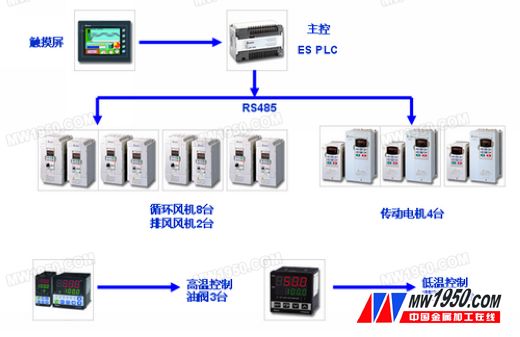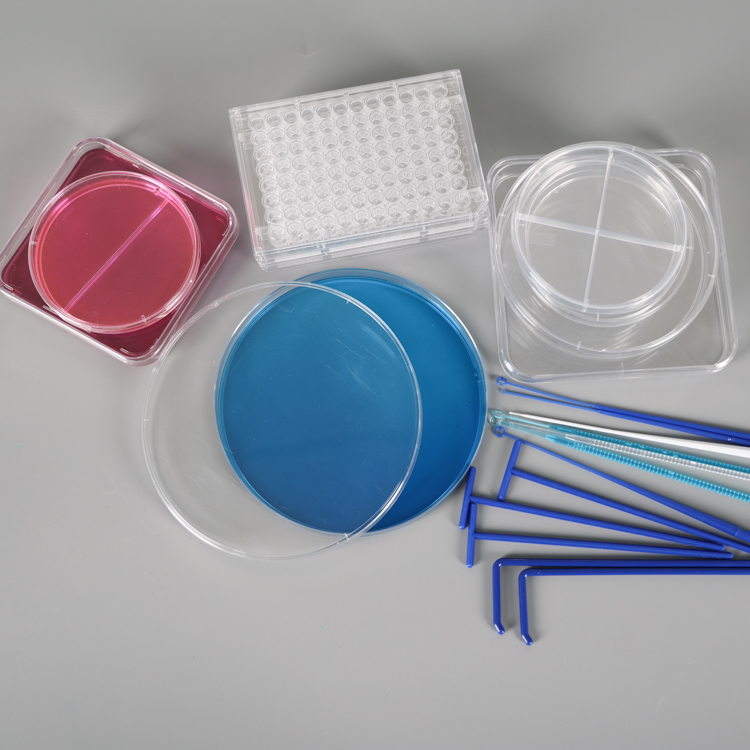1 Introduction
The steaming machine is one of the three major equipments in the production of flower cloth and has broad development prospects. The world's dyeing and finishing equipment manufacturers are competing to develop, in order to maximize the level of mechatronics in mechanical and electrical design. At present, the steaming machines manufactured in China are mainly developed on the basis of prototypes imported from Italy and Germany in the 1980s. The level of mechatronics is relatively low, the structure is complex, the installation labor intensity is large, and the problems reflected in the use process are also more. . Therefore, this paper combines the application examples of Delta's electromechanical products to describe how it is applied on long-ring steamer, which is worthy of reference by industry peers.
2, the manufacturing process
The function of the steaming machine is to transfer the dye in the color paste to the inside of the fiber by vapor evaporation to achieve the fixation effect, and its effect directly affects the color and vividness after printing. The main process parameters affecting the effect of the steamer are temperature, humidity and steaming time. They have certain changes with different fibers and dyes. The fabric ringing in the steaming process is safe and reliable for steaming time, quality and process. . The steaming machine generally adopts an adjustable low-tension feeding roller to ensure the tidy looping into the maximum, and has a reliable fabric loop conveying device; the separating roller is independently driven to meet the cloth discharging function and reduce the maintenance workload.
The good ring of the steaming process directly affects the color, vividness, color fastness and sharpness of the flower profile. The steaming process can be divided into four stages: fabric moisture absorption stage, fabric heat preservation and dehumidification stage, fabric heating and cooling stage, and fixation stage.
3, system solution
3.1 Introduction to the overall solution
1. The Delta B series inverter is used to drive the cloth feeding motor, the main drive motor, the cloth discharging motor and the falling cloth motor, and the Delta F series inverter is used to drive six circulating fans and two exhaust fans and one blowing ring fan. .
2. Using Delta ES series PLC as the control center, control the steaming time, loop length, fan speed, etc., make full use of its inherent function of RS485 communication with Delta inverter, for progressive motor, main drive The motor, the cloth discharge motor and the falling motor are coordinated for speed control.
3. PID control of the heating temperature in the steaming box is carried out by Delta's DTB temperature controller. The 4-20 mA signal is used to drive the pneumatic adjustment to control the flow of the heat transfer oil, and the temperature control accuracy reaches ±1 °C.
4. Monitor the process parameters and process flow with Delta touch screen. Complete the fault alarm, display the fault information, and perform production data statistics.
3.2 Electrical Control System Architecture
The entire electrical control system architecture is shown in Figure 1.
The system adopts DOP-AS57CSTD as the human-machine interface master station monitoring equipment, connects PLC host DVP60ES00R2 through RS232 protocol, and connects Delta temperature controller DTB9696CR through RS485 protocol. In the secondary network, PLC host connects VF series inverter through RS485 protocol. The wind turbine controls the fan and the drive motor in the field; the temperature controller directly controls the high temperature control oil valve and the low temperature control steam valve in the field.

Figure 1 Control System Architecture
| 1 | 2 | 3 | Next page |
Petri Dishes (Stackable & Slippable)
Manufactured from medical-grade virgin polystyrene
Ventilation ribs reduce condensation and allow air circulation
Consistent flatness allows for even media distribution
Flared lid skirt and squared corners for easy one-hand operation, especially with gloves
Stackable Petri Dishes
Recommended for standard microbiology or general laboratory use
Stackable lid design for increased stability
Available in two sizes: 60mm x 15mm and 100mm x 15mm
Automation Petri Dishes (Slippable)
Designed for automated filling and streaking systems
Side Arrows and ISO Mark Target for automation
Available in 100mm x 15mm size
Petri Dishes (Slideable)
Features a partial edge ring on base which allows a single dish to be slid from a large stack and enhances stability when stacked
Petri Dishes (Non-treated Cell Culture Dishes)
Stronger, heavier construction
Surface is hydrophobic and does not facilitate cell attachment
Available in four diameters: 35, 60, 100 and 150mm
150mm x 15mm Petri Dish now available
35mm dish has off-set bottom for improved handling
60 & 100mm dish features a grip ring on the base
Lids contain molded spacers for gas exchange
Stackable lid design for increased stability
Packaged sterile (gamma irradiated)

Cell Dish,Inoculating Loops,Culture Plate,Pasteur Pipette,Cell Culture Dish
Yong Yue Medical Technology(Kunshan) Co.,Ltd , https://www.yongyuepcr.com